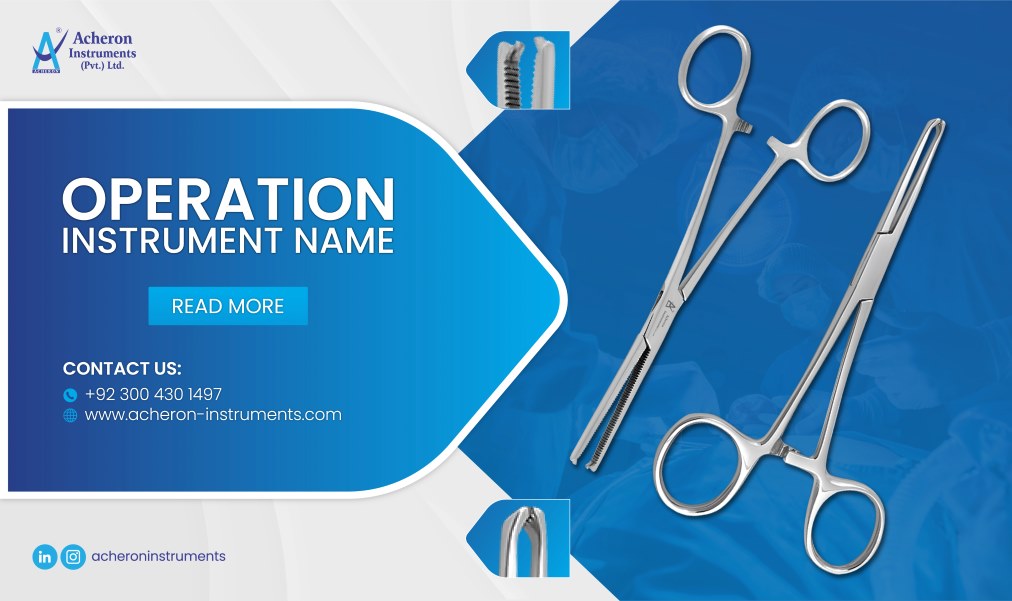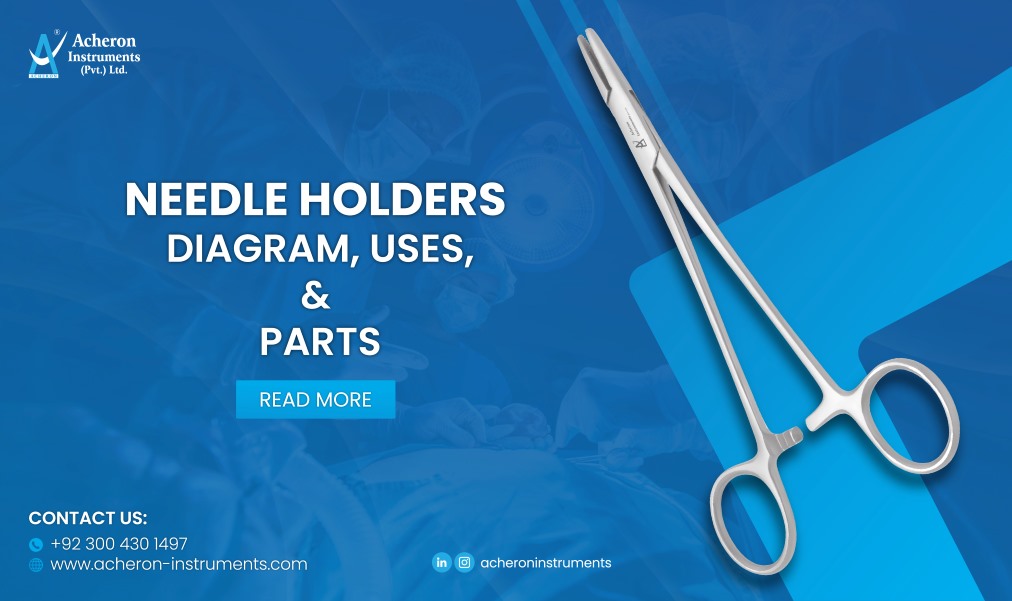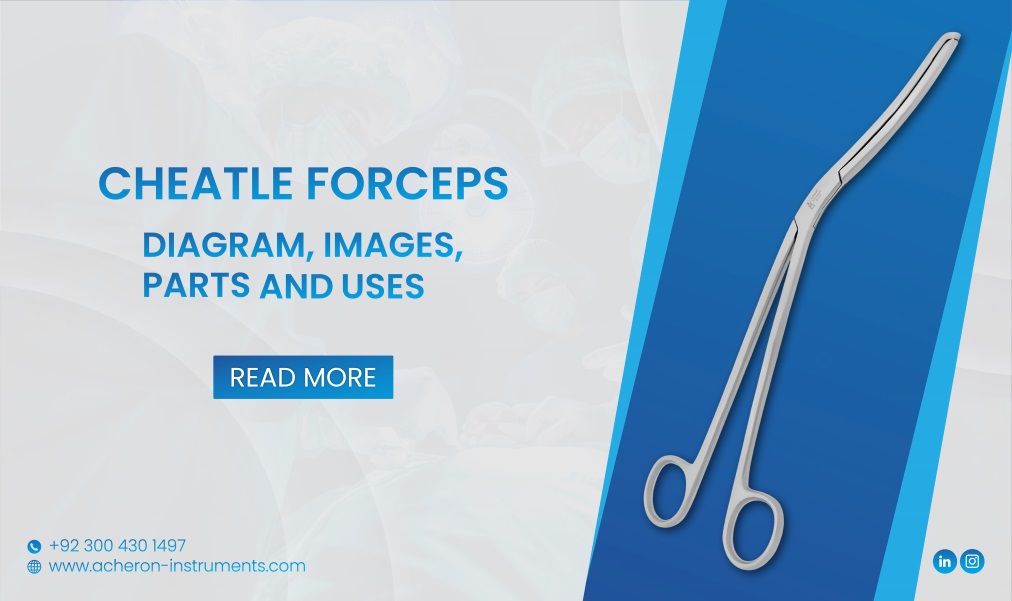Various types of surgical forceps
Forceps are used in various types of medical and dental procedures. The all-purpose nature of these instruments makes them essential tools for surgical procedures in every hospital and healthcare facility. They undoubtedly provide technical efficiency and precise functionality that fingers cannot provide by themselves. Different kinds of forceps available vary in functionality and are used in non-surgical and regular surgical emergencies.
Primary functions of forceps
The significant functionality and characteristics of forceps are:
- These grasping-type surgical instruments are used for clamping, applying pressure tweezing, etc.
- Forceps are used widely in surgical procedures for holding, grasping, and manipulating tissues as well as removing or placing sponges, gauze, wipes, etc.
- They are very helpful in retracting, stabilizing, and grasping the tissues in surgeries.
Different types of forceps
Forceps are known for providing a smooth pathway and immense comfort to surgeons for successful surgeries. These useful tools enable doctors to handle stressful situations with efficiency and great professionalism due to their ergonomic structural movements and enhanced features.
Let’s discuss various kinds of surgical forceps and their relevant working mechanism, functionality, and applications.
types of forceps
Scissor style forceps
As the name indicates, these types of forceps resemble scissors because of their shape as they consist of round-shaped handles. Often called clamps or hemostats by surgeons, they are useful to protect the tissues without tearing them apart while carrying and raising the desired tissue.
In conditions where surgeons need to cease the blood flow at once, these forceps play a vital role when there is a need to contract or squeeze the vascular entities such as blood vessels. This allows some spare time for surgeons to finish their remaining procedures gradually.
Hemostatic types of forceps
Hemostatic forceps are considered crucial and their functionality is remarkable during frustrating surgeries. These forceps hold significant importance in the field of the medical profession.
These forceps allow surgeons to perform each step of surgery smoothly and non-reluctantly. One of the amazing features of this tool is that it can constrict veins and arteries allowing the surgeons to stop the blood flow. Hemostatic forceps have a locking ratchet and this clamping tool is used widely in all the stipulated steps of the surgery.
Tweezer style forceps
These forceps look like tweezers and are made into use through the compression made between the user’s forefinger and thumb. The other names used for these forceps are dressing forceps, tissue forceps, and pick-ups. Tweezer style forceps are generally non-rachet and come with a wide array of tip options including cupped, serrated, diamond-dusted, flat, teeth, or ring. The shape of the tip might be curved, angled, or straight.
The brilliant structural properties of this instrument allow the safe transfer of tissues during surgery regardless of how absorbent the tissues are. The procedural pressure of surgeons is greatly reduced due to their exceptional functionality in holding and carrying various stitching threads and tissues.
Splinter types of forceps
These forceps work amazingly, especially in situations that require precision and caution at the same time. it comprises a magnifying glass of premium quality to provide better visualization by enlarging the operative field. The magnifying glass property allows surgeons to get the hang of dull and restricted areas.
Dressing forceps
There are several alarming situations such as accidents where this tool plays an integral part. Sometimes, the skin begins to bleed after getting ruptured which can lead to further alarming consequences. Also, if the wound doesn’t get dressed up properly or instantly, it may lead to the growth of microbial infections that can be challenging to cope with.
Doctors make use of this tool in such situations. On these bases, there are three major functions of these forceps. The major task is placing the adhesive wound stripes and the interrelated gauze on the injury site that matches perfectly with the size of the bruised or compromised area.
Other functions include intriguing the needle to quickly close up the wound for preventing the chances of blood loss or infection as well as cleaning the ripped tissues and debris from the wound site.
Tissue forceps
Tissue forceps come into use meticulously when grasping the skin layers and flimsy tissues when required. There is a need to hold up the tissues for the skillful surgery with utmost care and that is favorably possible with the use of these forceps.
Extensively used medical forceps
Ring types of forceps
In general, the two broadly used classification categories for forceps are ring forceps and thumb forceps. The idea of ring forceps originated from obstetric forceps as they look like scissors, are hinged, and provide a firm hold with the ring holes on the end. These grasping instruments come in two forms i.e. curved or angled.
The major feature of this tool is that it holds fragile structures firmly without sliding through blades in any direction. The different variants of ring forceps hold their value in their uniqueness. However, the primary function is to provide grip and hold to the desired structure. There are a lot of variations available, each has its distinctive characteristics. Talking of which, one of the widely used types is mosquito forceps which are compact and can move with freedom comfortably. The ease of handling and operating makes these forceps desirable to surgeons as their use makes the entire procedure smooth for both the physician and the patient.
Ophthalmological surgeries demand these forceps heavily for their accuracy as these are a radical choice for such complicated surgeries.
One of the fundamental parts of this family is towel forceps which are greatly used to keep the surgical clothes and towels in a firm position to soak blood and clear the surgeon’s view by cleaning the unnecessary debris from the operative site.
Obstetric type of forceps
These forceps are important during obstetric surgeries such as childbirth to make sure that the baby is not harmed throughout the procedure. The gynecologists are assisted by making use of variations of these forceps to pull out the baby's head gradually without any hassle.
These tong-like forceps make this process called ‘crowning’ easier to perform. In previous times, there was no such concept of secure and safe deliveries. However, the primitive use of these tools has brought immense convenience for midwives as well as mothers for being so helpful.
Thumb forceps
These forceps are known for their distinctive feature of functioning on a spring mechanism. The spring mechanism of these forceps makes them different from the rest as it enables the forceps to take hold and release the desired tissues without distorting or rupturing them which is undoubtedly an integral part of a surgery.
There are further sub-classes and categories of these forceps which are excellent tools for performing ideal surgeries without turning the situation into a mess.
This tool cannot be avoided due to its significant uses and practicality and includes some major types of forceps that are crucial for every surgical procedure. This tool allows smooth termination of the process without any self-doubts or fears.
Bottom line
There is not a single scenario in any general operating or surgical room where the use of surgical forceps is disregarded. They are an integral part of any surgical procedure and come in different variations based on the surgeon’s need and assistance.
If you are looking for premium quality surgical tools, don’t forget to consider Acheron instruments. There is an extensive array of equipment available at reasonable prices. We aim to manufacture and supply only premium quality instruments forged with Tungsten Carbide inserts and German stainless steel.
FAQs related to types of forceps
What are medical forceps?
Medical forceps are surgical tools that are deliberately used for grasping, tweezing, or clamping tissues.
Which type of forceps is best used for the suturing procedure?
Needle forceps/needle holders have textured tips that make them suitable for suturing procedures as they hold sutures firmly.
What is the important use of surgical forceps?
Forceps are massively used for holding equipment such as swabs and needles as well as helpful in manipulating the tissues.









